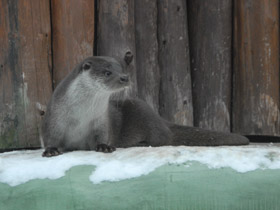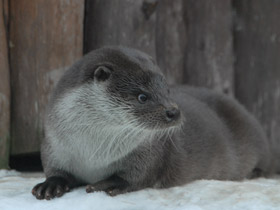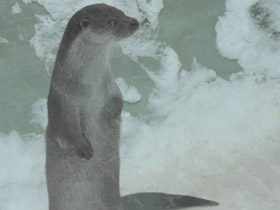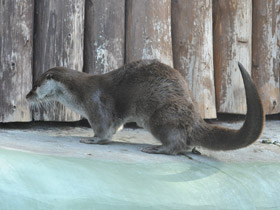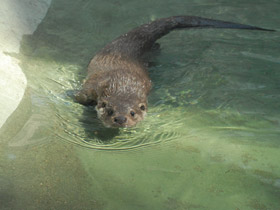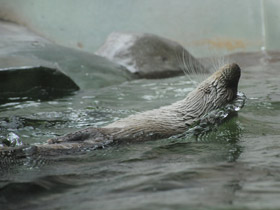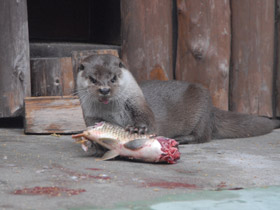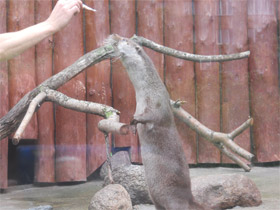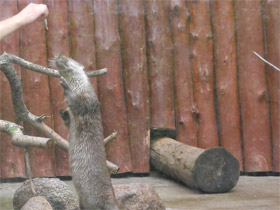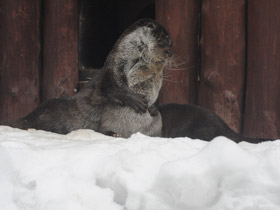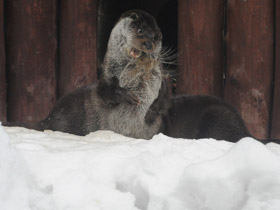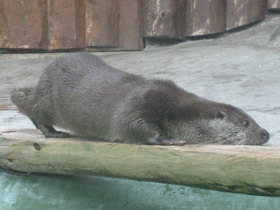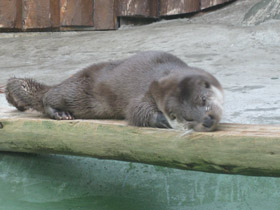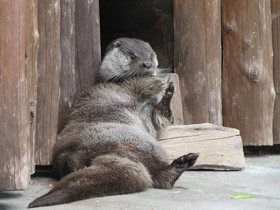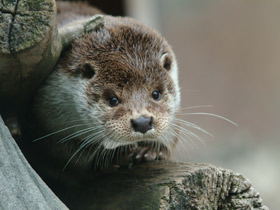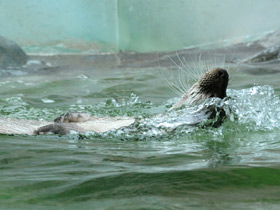The Eurasian otter, the European otter, Eurasian river otter, European river otter, common otter, and Old World otter (Lutra lutra)
The Eurasian otter (Lutra lutra), also known as the European otter, Eurasian river otter, European river otter, common otter, and Old World otter, is a semiaquatic mammal native to Eurasia and Maghreb. The most widely distributed member of the otter subfamily (Lutrinae) of the weasel family (Mustelidae), it is found in the waterways and coasts of Europe, many parts of Asia, and parts of northern Africa. The Eurasian otter has a diet mainly of fish, and is strongly territorial. It is endangered in some parts of its range, but is recovering in others.
Description
Lutra lutra is a carnivorous mammal of the mustelid family with an aquatic habitat. Lutra lutra are unusually flexible, agile and rather large animals: their body length reaches 95 cm (of which more than half is due to the muscular tail) and they weigh up to 10 kg.
These animals are semi-aquatic, and their entire body structure is designed for fast underwater swimming: flat head, short legs with five webbed toes, long tail and non-wetting fur (photo 1, 2, 3, 4). When swimming slowly, the otter paddles with all four legs, while when diving or swimming rapidly, the animal works only with its tail and strong hind legs, pushing the front legs to the sides of the body, it can also swim on its back (photo 5, 6). During immersion, the otter's nostrils and ears flatten and it can remain underwater for up to 5 minutes.
Nutrition
Lutra lutra feeds mainly in the water. It feeds mainly on fish (photo 7), but also on frogs and crayfish, and occasionally on rodents and birds, or worms. In the water, Lutra lutra lutra's movements are so swift and sure that it easily catches even the fastest fish. There is a widespread opinion among fishermen and hunters that the Lutra lutra is harmful, but special studies have shown that where otters settle, fish catches increase rapidly. This is explained by the fact that Lutra lutra lutra mainly catches sick and weakened fish and, in addition, by destroying the weedy fish, it protects the eggs of commercial species from being eaten.
Behaviour
Lutra lutra are very mobile animals, which spend much of their time playing (photo 11, 12). They love to skate on smooth ice or steep slopes, where characteristic grooves are left in the clay or snow. Lutra lutra even have special "rolling slides", which the animals have been using for play for decades (see video 8). In the ponds where Lutra lutra lutra live, you can also find squares on the shore with trampled grass where the otters rest during the day, and also - feeding and observation tables with food scraps and droppings. Lutra lutra mark the boundaries of their territory with olfactory and visual marks (Photos 13, 14).
Although in the wild Lutra lutra lutra avoids humans, in captivity it is easily tamed and very friendly (photo 9, 10).
Reproduction
Lutra lutra have 3-4 young in a litter, they mature earlier than other vultures, but usually remain with their mother for quite a long time (about a year). The female boldly defends her young from predators, sometimes even attacking humans.
Taxonomy
The extinct Japanese otter is sometimes considered a subspecies; recent studies have found it to fall outside the subspecific clades comprising Lutra lutra, so it has been reclassified as a distinct species, but significant uncertainty remains.
Subspecies
- Northern otter (Lutra lutra lutra);
- Caucasian otter (Lutra lutra meridionalis);
- Central Asian otter (Lutra lutra seistanica).

















